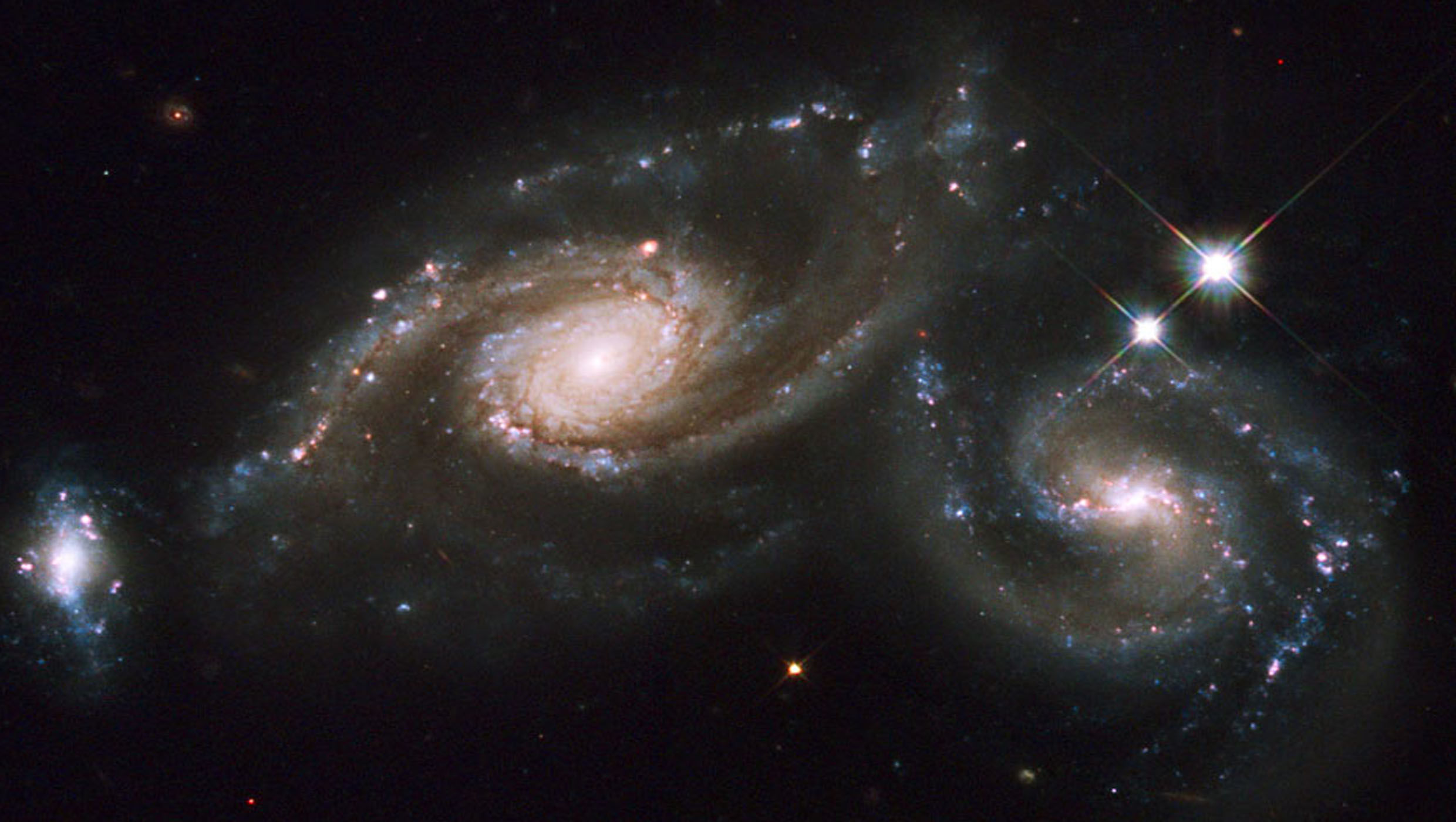Create a free profile to get unlimited access to exclusive videos, sweepstakes, and more!
The Milky Way head-butted another galaxy billions of years ago

Billions of years ago, a galactic smash happened, and one star eyeballed by NASA’s TESS planet hunter revealed everything.
The Milky Way has merged with many other galaxies in the distant past. The problem is that these mergers have been notoriously difficult to date, because the clusters of stars from these smaller galaxies have a distinct way of moving that is not in sync with other objects in our galaxy. Now a study on TESS observations has revealed that the star v Indi of the constellation Indus — so bright you can see it with the naked eye — gives away when the phenomenon otherwise known as the Gaia-Enceladus collision happened.
“Since the motion of ν Indi was affected by the Gaia-Enceladus collision, the collision must have happened once the star had formed,” said Bill Chaplin, Professor of Astrophysics at the University of Birmingham, and leader of a study recently published in Nature Astronomy. “That is how we have been able to use the asteroseismically-determined age to place new limits on when the Gaia-Enceladus event occurred.”
This definitely makes sense, since v Indi couldn’t have been affected by the event if it was just a cloud of gases that hadn’t yet evolved into a star. The star also shows signs of having been heated by the motion of the epic crash between the monster Milky Way and the dwarf galaxy Gaia-Enceladus.
As if that isn’t enough evidence, there are many stars formerly of Gaia-Enceladus scattered in the Milky Way, which Chaplin and his team believe tell us the intensity of the collision and the impact on our still-developing galaxy.
Stars’ histories are frozen in time, kind of fossilized in a way, which gives insight into their history and the environments that spawned them. v Indi is an ideal remnant of the disaster to focus on. Astroseismology, or the measurement of a star’s oscillations (movements back and forth), inferred from TESS observations, was used to put an age on this star. ESA mission data was also used to shed light on the mystery of when this star was born and when its motion changed. The time that v Indi’s movement through the galaxy was shaken up gives away the time of the collision. Turns out Gaia-Enceladus head-butted the Milky Way between 11.6 and 13.2 billion years before the solar system was even formed, way before it was even a twinkle in any of those stars.
Galaxies collide all the time (like the two spiral galaxies of Arp 27, above). When one galaxy passes another, their forces of gravity can at the very least warp both galaxies (this is called an interaction), and at the very most, pull one into the other, merging them. A dwarf galaxy like Gaia-Enceladus obviously didn’t stand a chance next to the gravitational muscle of the Milky Way. Because immense amounts of galactic gas and dust are sent flying at each other at superfast speeds, they create enough friction and shock waves for the genesis of new stars.
“This study demonstrates the potential of asteroseismology with TESS, and what is possible when one has a variety of cutting-edge data available on a single, bright star,” said Chaplin.
Galactic mergers take hundreds of millions of years, so it’s not just like you can watch one happening through a telescope. NASA’s Hubble Space Telescope has let us in on different stages of such collisions through its unreal images.
(via University of Birmingham)


























